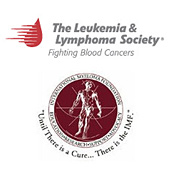

Benzene and Thrombocytopenic Purpura
Introduction
Thrombocytopenic purpura is a hematologic condition characterized by a low platelet count and mucocutaneous bleeding. There are a number of varieties of the disease. More information on Thrombocytopenic Purpura >>
See, generally, Cines, D. B., et al., “Immune Thrombocytopenic Purpura,” N. Engl. J. Med. 346(13):995-1008 (March 13, 2002).
When the disease is caused by a hereditary disorder, it may be called “Congenital Thrombocytopenic Purpura.”
See, generally, Cines, D. B., et al., “Congenital and Acquired Thromboctyopenia,” Hematology 390-406 (2004).
When the disease is caused by medications, it may be called “Drug-Induced Thrombocytopenic Purpura.”
See, generally, van den Bemt, P. M., et al., “Drug-induced Immune Thrombocytopenia,” Drug Safety 27(15):1243-1252 (2004).
A particular type of the drug-induced disease is called “Heparin-Induced Thrombocytopenia,” and occurs in 1%-4% of patients treated with unfractionated heparin for a minimum of 7 days.
See, Zehnder, J. L., “Heparin-Induced Thrombocytopenia: ASH Update,” Hematology 401-406 (2004).
When the cause of the disease in a patient is not apparent to the physician, the disease is often called “Idiopathic Thrombocytopenic Purpura.”
See, generally, George, J. N., et al., “Idiopathic Thrombocytopenia Purpura: A Practice Guideline Developed by Explicit Methods for the American Society of Hematology,” Blood 88:3-40 (1996); George, J.N., “Idiopathic Thrombocytopenic Purpura: Current Issues for Pathogenesis, Diagnosis, and Management in Children and Adults,” Curr. Hematol. Rep. 2(5):381-387 (2003).
The disease can manifest acutely and chronically. See, George, J.N., et al., “Chronic Idiopathic Thrombocytopenic Purpura,” New Engl. J. Med. 331:1207-1211 (1994).
Benzene-Induced Thrombocytopenia
It has long been known to the medical community that benzene causes thrombocytopenia and other related platelet disorders.
See, e.g., Helmer, K. J., “Accumulated Cases of Chronic Benzene Poisoning in the Rubber Industry,” Acta Medica Scand. 118(4-5):354-375 (1944); Favre-Gilly, “Syndrome hemorragique benzolique avec simple alteration morphologique des plaquettes: de l’utilite d’examen systematique des plaquettes sure lame chez les ourvriers exposes au benzol,” Arch. Mal. Prof. 91:274-277 (1948); Morel, P., et al., “[Blood platelets in the diagnosis and prognosis of benzol poisoning],” Bull. Soc. Med. Du Travail de Lyon (Feb. 15, 1952); Canci, A., [“Effect of Adenine on Thrombopenia Induced by Experimental Benzene Poisoning”], Boll. Soc. Ital. Biol. Sper. 31(5):40-410 (1955); Saita, G., et al., “[Study of blood platelet function in former and active cases of benzolic hemopathy],” Med. Lav. 49(1):13-37 (1958); Lob, et al., “[The effect of benzene on thrombocytes and various enzymatic activities]”, Arch. Mal. Prof. 24:371-374 (1963); Monteverde, A., et al., “The effect of Fibrinogen and Platelts on the Thromboelastogram in Benzene Poisoning,” Med. Del Lavoro 54(2):95-102 (1963); Saita, G., et al., “Thromboelastographic investigations in benzene haemopathy,” Med. Del Lavoro 55(11);655-664 (1964); Hernberg, S., et al., “Prognostic Aspects of Benzene Poisoning,” Brut. J. Ind. Med. 23:204-209 (1966); Petelenz, T., et al., “[Thrombocytopenia in Chronic Occupational Intoxication with Benzene,”] Wiad Lek. 19(17):1393-1396 (1966); Inceman, S., et al., “[Impaired Platelet-Collagen Reaction in a Case of Acute Myeloblastic Leukemia Due to Chronic Benzene Intoxication,” Turk Tip Cemiy Mecm. 36(7):417-424 (1969); Inceman, S., et al., “[Thrombopathy in the Course of Benzene-Induced Leukemia]”, Nov. Rev. Fr. Hematol. 9(4):573-574 (1969); Aksoy, M., et al., “Haematological Effects of Chronic Benzene Poisoning in 217 Workers,” Brit. J. Ind. Med. 28:296-302 (1971); Aksoy, M., et al., “Details of Blood Changes in 32 Patients with Pancytopenia Associated with Long-term Exposure to Benzene,” Brit. J. Ind. Med. 29:56-64 (1972); Grossenbacher, J., et al., “Etude longitudinale des effects à long berme d’une exposition professionnelle au benzène,” Schweiz. Med. Wschr. 112:1858-1859 (1982); Micu, D., et al., “The Value of Some Cytoenzymochemical Investigations of the Leukocytes and Platelets in Estimating the Effects of Occupational Exposure to Benzene, Vinyl Chloride and Carbon Disulphide,” Rev. Roum. Med.-Med. Int. 23(2):115-120 (1985); Aksoy, M., “Hematotoxicity and Carcinogenicity of Benzene,” Environ. Health Perspect. 82:193-197 (1989); Niazi, G.A., et al., “Blood Dyscrasia in Unofficial Vendors of Petrol and Heavy Oil and Motor Mechanics in Nigeria,” Tropical Doctor 19:55-58 (1989); Rothman, N., et al., “An Epidemiologic Study of Early Biologic Effects of Benzene in Chinese Workers,” Environ. Health Perspect. 104(Suppl. 6): 1365-1370 (1996); Rothman, N., et al., “Hematotoxicity Among Chinese Workers Heavily Exposed to Benzene,” Amer. J. Ind. Med. 29:236-246 (1996); Kudla, I., “Exposure to Benzene-Contaminated Toluene and Bone Marrow Disorders: A Retrospective Exposure Assessment,” Appl. Occup. Environ. Hyg. 12(1):11-14 (1997); Wiwanitkit, V., et al., “The Urine Trans, Trans Muconic Acid Biomarker and Platelet Count in a Sample of Subjects with Benzene Exposure,” Clin. Appl. Thrombosis/Hemostasis 10(1):73-76 (2004).
Benzene-Induced Thrombocytopenic Purpura
Several case reports of benzene-induced thrombocytopenic purpura have been published in the medical literature. Indeed, the first case report of benzene-induced hematologic disease was a case of thrombocytopenic purpura. Le Noir, M. M., et al., “Sur un cas de purpura attribué a l’intoxication par la benzine,” [A case of purpura caused by benzene poisoning]; Bull. Mem. Soc. Med. Hop. 3(14):1251-1261 (1897) [in French]. Many case reports of benzene-induced thrombocytopenic purpura were reported during the century following Le Noir’s early report.
See, e.g., Selling, L., “A Preliminary Report of Some Cases of Purpura Haemorrhagica Due to Benzol Poisoning,” Bull. Johns Hopkins Hosp. 21:33-37 (1910); Delore, P., et al., “Leucémie aiguë au cours de l’intoxication benzénique: sur l’origine toxique de certaines leucémies aiguës et leurs relations avec les anémies graves,” [Acute leukemia in the course of benzene poisoning: the toxic origin of certain actue leukemias and their relationship to severe anemias]; J. Med. Lyon 9:227-233 (1928); Andre, R., et al., “[Grave hemolytic anemia associated with thrombopenic purpura haemorrhagica; probable role of benzol; massive transfusion, splenectomy, recovery]; Bull. Mem. Soc. Hem. Hop. 31(24):521-530 (March 31, 1950); Andre R., et al., “[Severe hemolytic anemia associated with thrombopenic hemorrhagic purpura; probable role of benzol; massive transfusion; splenectomy, recovery,” Sang 22(1):57-65 (1951); Schatzmann, H. J., “[Fatal thrombocytopenic purpura in benzol poisoning],” Schweiz. Med. Wochenschr. 85(46):1123-1126 (Nov. 12, 1955); Gambini, G., et al., “[Is there an isolated benzene-induced thrombocytopenic purpura],” Med. Lav. 59(1):25-31 (1968) [in Italian]; Ribera, J. M., et al., “[Idiopathic thrombocytopenic purpura folflowing recovery from a benzol-induced bone marrow aplasia],” Sangre (Barc.) 29(2):224-225 (1984); Chuansumrit, A., et al., “Acquired aplastic anemia in children: a review of 100 patients,” Southeast Asian J. Trop. Med. Public Health 21(2):313-320 (1990); Kudla, I., “Exposure to Benzene-Contaminated Toluene and Bone Marrow Disorders: A Retrospective Exposure Assessment,” Appl. Occup. Environ. Hyg. 12(1):11-14 (1997).
Conclusion
The foregoing medical studies provide sufficient evidence that benzene causes thrombocytopenia and the rare disease sometimes known as thrombocytopenic purpura.



